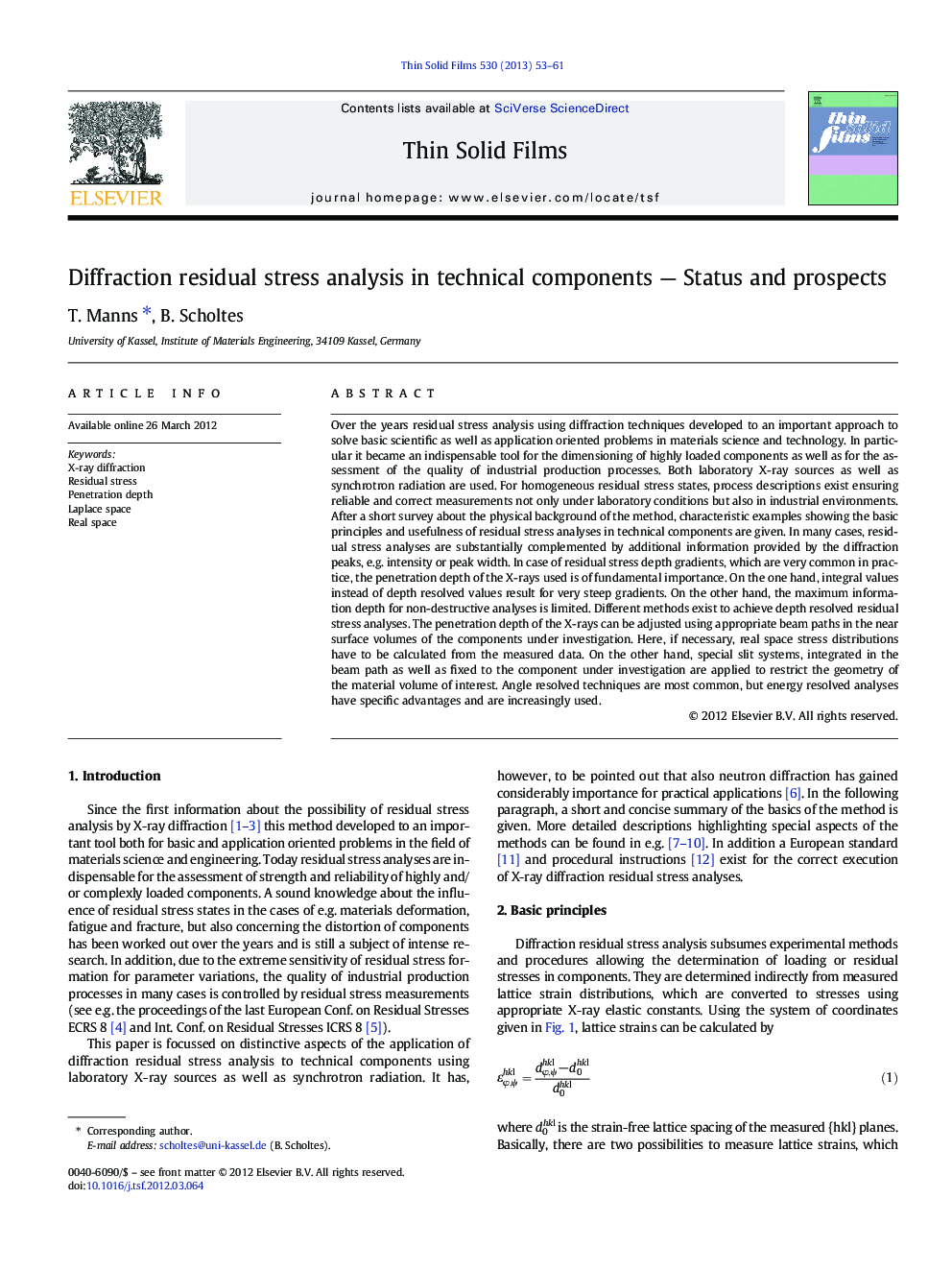| کد مقاله | کد نشریه | سال انتشار | مقاله انگلیسی | نسخه تمام متن |
|---|---|---|---|---|
| 1666705 | 1518074 | 2013 | 9 صفحه PDF | دانلود رایگان |

Over the years residual stress analysis using diffraction techniques developed to an important approach to solve basic scientific as well as application oriented problems in materials science and technology. In particular it became an indispensable tool for the dimensioning of highly loaded components as well as for the assessment of the quality of industrial production processes. Both laboratory X-ray sources as well as synchrotron radiation are used. For homogeneous residual stress states, process descriptions exist ensuring reliable and correct measurements not only under laboratory conditions but also in industrial environments.After a short survey about the physical background of the method, characteristic examples showing the basic principles and usefulness of residual stress analyses in technical components are given. In many cases, residual stress analyses are substantially complemented by additional information provided by the diffraction peaks, e.g. intensity or peak width. In case of residual stress depth gradients, which are very common in practice, the penetration depth of the X-rays used is of fundamental importance. On the one hand, integral values instead of depth resolved values result for very steep gradients. On the other hand, the maximum information depth for non-destructive analyses is limited. Different methods exist to achieve depth resolved residual stress analyses. The penetration depth of the X-rays can be adjusted using appropriate beam paths in the near surface volumes of the components under investigation. Here, if necessary, real space stress distributions have to be calculated from the measured data. On the other hand, special slit systems, integrated in the beam path as well as fixed to the component under investigation are applied to restrict the geometry of the material volume of interest. Angle resolved techniques are most common, but energy resolved analyses have specific advantages and are increasingly used.
► The focus is on analysis and assessment of in-depth strain/stress gradients.
► Different approaches are presented using attenuation of X-rays as well as masks.
► The difficulty to get real space information from integral diffraction signals is clarified.
► Examples deal with mechanical/thermal surface treatments and thin coatings.
Journal: Thin Solid Films - Volume 530, 1 March 2013, Pages 53–61